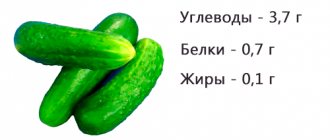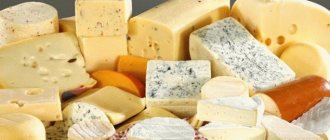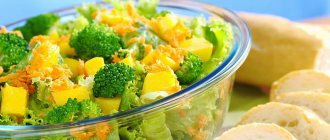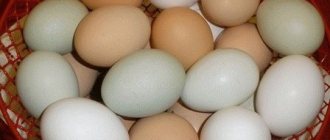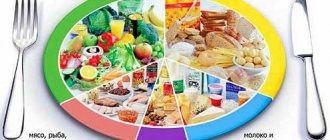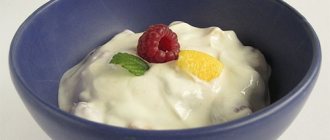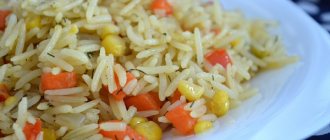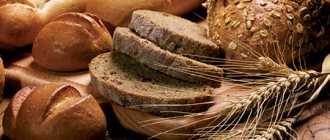Carrots for pancreatitis can be introduced into the patient’s diet only in the stage of stable remission. The root vegetable contains many substances and vitamins useful for the body, due to which it has a positive effect on the body, normalizing the processes occurring in it. Carrots are often included in the list of approved foods for dietary use for pancreatitis. It is recommended to use the vegetable in grated or heat-treated form, which allows you to compensate for the lack of vitamins and minerals resulting from inflammation of the pancreas and therapeutic fasting.
Is it possible or not to eat carrots for pancreatitis?
Carrots are a vegetable rich in vitamins, enzymes and microelements, which also contains coarse fiber. Despite the fact that the root vegetable is more useful in its raw form, its use without heat treatment should be treated with caution.
It is not allowed to use the vegetable in the acute phase of pancreatitis, since during the first three days the patient is allowed to be given only still mineral water or rosehip decoction in limited quantities.
On the 5th day, the patient is allowed to be given vegetable puree in small portions and pureed porridge. When preparing food, choose foods that do not put a strain on the pancreas. All ingredients of dishes must be from the list of permitted foods; you must carefully monitor the body’s reaction after taking each new dish.
On the 7th day after an attack of the disease, the diet is significantly expanded, adding slimy porridges, puree soup, vegetable purees, steamed vegetable cutlets, vegetable stews and puddings. Carrots can be added to various dishes at this time as a seasoning and to enrich the composition. The root vegetable can be included in the menu in boiled, baked, stewed form already on the 14th day after the last exacerbation of pancreatitis. It is useful to use carrot puree, which should be consumed starting from 1 tbsp. l. In all cases, the vegetable should be used in small quantities.
In case of chronic pancreatitis, the use of raw carrots is also not allowed, since this can harm the inflamed gland, causing activation of enzyme production, as well as causing bloating and flatulence. At this stage, the use of boiled or stewed carrots is acceptable and can have a positive effect on the digestive tract and the general condition of the body.
In order to fully absorb the carotene contained in carrots, fats in the form of vegetable oils and sour cream are added to root vegetable dishes.
At the stage of stable remission, the use of raw carrots in the form of freshly squeezed juice is allowed. You should start taking carrot juice with small portions. You should take diluted juice, adding other permitted juices to it and getting a light, non-concentrated drink. It is necessary to carefully monitor the body's reaction, if carrot juice does not cause negative reactions, gradually reduce the amount of other ingredients and use juice with pulp. Even if taking carrot juice does not cause a negative reaction, you should use the drink in limited quantities - no more than 6 glasses per week and no more than 400 ml per day.
Beneficial properties of carrots for the pancreas
It is difficult to overestimate the importance of carrots for the digestive system. Regular consumption of vegetables restores and supports the functioning of the pancreas. A sufficient amount of fiber promotes the active removal of various types of waste and toxins from the body, eliminates excess sugar, bad cholesterol and other harmful substances.
The role of carrots in restoring and maintaining water-electrolyte balance, improving digestion, and normalizing metabolism has been proven. The vegetable has an anti-inflammatory effect, protects mucous membranes from the influence of irritating factors, reduces the intensity of pain and other symptoms.
The beneficial properties of carrots for the pancreas are determined by the period of the disease. People at high risk of developing pancreatitis are recommended to consume the vegetable as a preventive measure.
During the period of acute pancreatitis, with pronounced clinical signs, a strict diet is indicated. For the first 2-3 days, doctors recommend completely abstaining from food, drinking only still water, rosehip infusion, and herbal tea without sugar. This relieves the affected organ.
As soon as possible, the patient is transferred to a nutritious diet. Starting from 3-4 days, carrots, like other foods, are allowed to be eaten. They provide a gentle regime; the menu includes dishes with a semi-viscous, liquid and semi-liquid consistency. Carrots are boiled or baked, steam pudding, puree, soufflé, and cutlets are prepared.
During remission
During the period of remission, the patient is transferred to a complete balanced diet. The diet includes carrots and carrot juice. They are combined with grains, vegetables and fruits, pre-heat-treated, and consumed without oil or salt. Fried carrots, which have a high calorie content, are excluded from the menu.
We invite you to familiarize yourself with the early ripening and self-pollinating cucumber Shchedrik for fresh consumption and preparations for the winter
Can I drink carrot juice? Yes, but it is better to mix it with other vegetable drinks. Start taking small doses - 100 ml, gradually increasing the portion to 400-500 ml per day or 200 ml at a time.
Reference. Excess carrots in the diet will cause bloating, increased gas, cramping, constipation and diarrhea.
Chronic pancreatitis allows the consumption of thermally processed vegetables. Raw carrots are heavy on the stomach and take a long time to digest; boiled or stewed carrots are easier to digest. It has lower calorie content, but the content of phenols and antioxidants increases, which resist many diseases and ensure proper functioning of the digestive system.
It is known that carrots are beneficial for the body as a whole, but especially for the pancreas. It eliminates problems with the digestive system, cleanses the intestines, and helps maintain the functionality of the gastrointestinal tract. It is also a source of micro- and macroelements and vitamins.
Carrots are low-calorie foods. In its raw form it has 41 kilocalories, in boiled form it has even less - only 35 kilocalories. The vegetable contains almost no fat, but is full of carbohydrates and proteins.
In terms of vitamin A content, carrots are ahead of any other vegetables. It is enough to eat 100 grams to get 240% of the daily value. It also contains:
- a nicotinic acid;
- ascorbic acid;
- vitamins E, H, K;
- group of vitamins B;
- organic acids;
- dietary fiber and other beneficial substances.
By including carrots in your daily menu, you can:
- protect yourself from the flu;
- improve the health of the skin and mucous membranes;
- slow down the aging of the face and body;
- strengthen immunity;
- keep teeth and bones intact;
- normalize metabolic processes.
Carrots are one of the healthiest vegetables. It contains many substances necessary for the normal functioning of the human body:
- vitamins B, C, A, K, E;
- microelements (iron, potassium, iodine, calcium, magnesium);
- carbohydrates, proteins (in small quantities), no fats.
Regular consumption of dishes from this vegetable brings great benefits to the body due to the following effects:
- Normalization of the body's defenses.
- Antioxidant effect, removal of toxins, which ensures cancer prevention and rejuvenation of the body.
- Improving the motor function of the digestive tract, eliminating constipation due to the effects of fiber contained in carrots.
- Beneficial effect on the organ of vision and on epithelial tissues, including the skin.
https://youtu.be/5B9NYAYPkwA
What are the benefits of carrots?
Carrots contain a large amount of carotene, which is transformed in the body into vitamin A. The root vegetable is a source of vitamins c, b, d, e, and is rich in minerals and microelements: potassium, calcium, iron, phosphorus, iodine, magnesium, manganese. Carrots contain essential oils, sterols, enzymes and other compounds necessary for the body.
Boiled carrots contain more useful substances than raw ones. According to some experts, after cooking carrots, the level of antioxidants in them increases by 34% and continues to increase during the first 7 days of storage in boiled form.
Carrots have a healing effect on the body due to its unique composition:
- Root juice and grated carrots have a general strengthening effect. They cleanse the blood, remove toxins from the body, stabilize metabolism, and normalize the functioning of internal organ systems. Carrots help eliminate vitamin deficiency and anemia.
- The root vegetable normalizes intracellular redox processes. Eating carrots improves immunity, stimulates the growth of healthy cells and reduces the likelihood of developing cancer.
- Due to the large amount of ca salts, carrots are useful for diseases of the cardiovascular system, atherosclerosis and high blood pressure.
- Carrot juice is used for kidney and liver ailments. The vegetable helps remove sand and small stones from kidney stones and cleanses the liver.
- Carrots regulate carbohydrate metabolism, normalize digestion, and eliminate constipation.
- The root vegetable contains phytoncides, which makes it possible to use it to destroy pathogenic microflora.
Carrots are used for disorders of the visual apparatus, catarrh of the respiratory tract, stomatitis, and inflammatory processes in the oral cavity. A mixture of carrot juice and honey is used to gargle for sore throat. The juice of the root vegetable is applied to burns, wounds and ulcers.
Due to the high content of vitamin A in carrots, the juice and pulp of the vegetable are often used as a facial skin care product in the form of masks.
Chemical composition of carrots
Carrots have a low calorie content - 41 kcal raw and 35 kcal after heat treatment, contain virtually no fat (0.1 g), but are rich in healthy carbohydrates (6.9 g) and proteins (1.3 g).
The composition contains all the substances necessary for the human body:
- amino acids;
- alimentary fiber;
- organic acids;
- starch;
- macroelements - potassium, calcium, sodium, magnesium, silicon, sulfur, chlorine, phosphorus;
- trace elements - iron, cobalt, iodine, manganese, molybdenum, copper, selenium, fluorine, zinc, chromium.
Carrots are superior to other vegetables in terms of vitamin A content: 100 g - 240% of the daily value. It is also a valuable source of ascorbic and nicotinic acids, vitamins E, H, K. Orange fruits are valued for their content of B vitamins: thiamine, riboflavin, niacin, choline, pyridoxine, pantothenic acid, folate.
Nutritionists, if possible, advise including carrots in the diet of healthy people every day. It contains high concentrations of beta-carotene. This element performs a number of important functions:
- slows down the aging process;
- protects against influenza and upper respiratory tract infections;
- maintains the health and condition of the skin and mucous membranes;
- has a positive effect on redox processes;
- takes part in the metabolism of proteins, fats, carbohydrates;
- increases resistance to intestinal diseases;
- strengthens the immune system;
- supports normal metabolism;
- ensures proper functioning of the sebaceous and sweat glands;
- maintains healthy teeth and bones;
- Maintains eye hydration and protects against drying out.
Carrots prevent the development of cardiovascular diseases. B vitamins and ascorbic acid increase the density and elasticity of vascular walls and small capillaries, reduce the level of bad cholesterol, and regulate blood glucose levels.
Potassium and magnesium ensure proper functioning of the heart muscle, improve the conduction of nerve impulses, copper is involved in hematopoiesis, and selenium stimulates the formation of red blood cells. As a result, the risk of formation of atherosclerotic plaques is reduced, normal blood flow is maintained, and the development of ischemia, stroke, hypertension, and diabetes is prevented.
Why and in what cases should you not eat raw carrots for pancreatitis?
It is not allowed to use carrots in their raw form during the acute phase of inflammation of the pancreas, since the raw root vegetable is a load for the damaged organ. During the period of exacerbation of the disease, it is necessary to use products that are easily digestible. Carrots contain coarse fiber that is difficult to digest. Eating raw vegetables can aggravate the patient’s condition, causing a new attack, which can result in various serious complications.
Raw carrots
The use of raw carrots is not recommended during periods of persistent remission. Raw carrots contain a special substance, the breakdown of which requires an increased percentage of insulin. A damaged pancreas produces very little insulin. As a result, additional stress is created on the gland. The vegetable contains coarse fiber (3.2 g of fiber per 100 g of carrots), which is almost not absorbed during pancreatitis and can provoke various negative manifestations in the digestive tract. The exception is carrot juice, which does not contain coarse fiber. Carrot juice should be taken in limited quantities. If using raw carrot juice causes diarrhea, you should stop drinking this drink.
Heat-treated carrots
Due to its rich composition, carrots have a healing effect on the body as a whole. The root vegetable is included in the diet for various diseases, including pancreatitis. Properly prepared carrot dishes have a beneficial effect on the pancreas, help replenish the body with necessary substances, and activate the restoration process of the damaged gland.
Heat-treated carrots are well digestible and do not cause problems associated with the gastrointestinal tract; dishes made from carrots or with the addition of vegetables can be given to the patient 7 days after the last attack of pancreatitis.
Recipes for food and drinks
Dietary nutrition for inflammation of the pancreas should not irritate the mucous membranes and burden the organ with additional work. Boiled and grated carrots fully meet these requirements. The tasty and healthy root vegetable is used to prepare puree, pudding, soufflé, salad and steamed cutlets. For better absorption of carotene, you can add a little sunflower, olive or flaxseed oil to your dishes, but only at the remission stage.
Carrots for pancreatitis can be prepared with potatoes and beets, seasoning potato-carrot dishes with milk, and beet-carrot dishes with vegetable oil.
Carrot puree is quick and easy to prepare. First, the root vegetables are thoroughly washed, peeled and chopped (in small cubes or strips). Then the prepared vegetable mass is placed in a saucepan, a little water is poured in to cover the carrots, cover with a lid and cook for 30 minutes over low heat. When the carrots are cooked, transfer them to another bowl and chop them with a mixer (or fork) into a homogeneous puree.
If you have a multicooker or double boiler, prepare root vegetables according to the instructions.
At the same time, the vegetable puree will retain much more useful substances than with simple cooking.
You can diversify the dish by adding spices allowed for pancreatitis: sesame seeds, turmeric, etc. If the acidity of the stomach is low, you can add a small amount of skim milk to the root vegetable to prepare a puree.
carrot juice
Carrot juice is prepared using a juicer. Select healthy, bright orange, medium-sized root vegetables (large vegetables indicate the presence of nitrates), wash, peel, and then squeeze the juice. To separate the pulp, fresh juice is passed through cheesecloth. The first week it is diluted with boiled water in a ratio of 1 to 3, in the second - 1 to 1, and only then try the pure drink.
Carrots are rich in vitamins, microelements, and fiber, but raw carrots for pancreatitis create additional stress on the pancreas.
Is it possible to eat raw fresh carrots for pancreatitis? In particular, is it possible to use carrot juice or grated carrots for inflammation of the pancreas? Can I have boiled carrots? Why does eating fresh carrots put stress on an inflamed pancreas? This is what this article is about.
Features of consuming root vegetables for pancreatitis
For pancreatitis, carrots should be used in heat-treated form. A puree is prepared from the root vegetable, to which sour cream or vegetable oil is added to improve the taste and digestibility of carotene.
You can add potato or apple juice to carrot juice, which makes the drink easily digestible and healthy.
The product should be introduced into the diet gradually, after introducing other vegetables and fruits allowed for pancreatitis into the menu.
Possible harm and contraindications
Carrots have many beneficial properties. It provides the supply of necessary macro- and microelements, is rich in vitamins K, C, E, PP, group B and beta-carotene, which is converted into vitamin A in the body under the influence of enzymes.
In addition to the beneficial effects of nutrients on the digestive tract, carrots have other positive properties. It tones, strengthens the immune system and has a pronounced antioxidant effect.
Dishes made from carrots are low-calorie (the calorie content of the boiled root vegetable is only 25 kcal per 100 g). They are widely used in children's, dietary and medical nutrition.
The harm of raw carrots for pancreatitis lies in the irritating effect of the product on the diseased organ. In addition, the fiber contained in the root vegetable is poorly digested during pancreatitis. The result is bloating, flatulence and diarrhea, aggravating the patient's condition.
Despite all the advantages of the root vegetable, it cannot be consumed uncontrollably. It is necessary to know when, how much and in what form carrots are included in the diet of a patient with pancreatitis.
Acute pancreatitis and carrots
In acute pancreatitis, especially in the first 3 days, the use of rough food is not allowed.
Eating raw carrots during the phase of acute pancreatitis is a burden for the damaged gland, since additional production of pancreatic juice and enzymes is required for digestion, and this negatively affects the pancreas.
In case of acute pancreatitis, the use of heat-treated carrots is also not recommended, since when the root vegetable is cooked, coarse fiber is broken down into simple sugars, but another danger arises - the glycemic index increases (glucose index increases), which indicates the inappropriateness of using carrots in the acute phase of pancreatitis.
Eating raw or boiled vegetables for inflammation of the pancreas
The healing effect on the body produced by carrots is undeniable:
- increasing immune defense;
- sharpening of vision;
- relief from constipation;
- removal of toxins;
- preventing cell death;
- regulation of fat metabolism.
Carrots are perfectly balanced in the dietary aspect - per 100 g of product there is:
- only 35 calories;
- 0.1 mg fat;
- 7 g carbohydrates;
- 1.2 g protein.
In addition to a high percentage of vitamin A, carrots are rich in:
- carotene and vitamins K, E, C, PP and group B;
- calcium, sodium, iron, potassium and magnesium.
Most useful elements are retained in thermally unprocessed vegetables, however, raw carrots for pancreatitis are strictly prohibited in case of acute inflammation and are not always recommended in case of chronic disease due to their natural fiber content.
Recipes for dietary dishes with carrots for pancreatitis
You can prepare various dietary dishes from carrots that will make your diet rich and interesting. Carrots can be boiled, cutlets, purees, soufflés can be made from them, combining the vegetable with dietary meat, other vegetables and herbs. The root vegetable can be steamed, in a slow cooker, baked and stewed, or added to various soups.
Carrot puree for acute pancreatitis
One of the healthy and easily digestible dietary dishes is carrot puree. It is recommended to include puree in the patient’s diet after the elimination of severe symptoms of pancreatitis, approximately at the beginning of the 14th day after an acute attack. The dish is prepared without adding salt, which makes it healthier.
To prepare the puree, you will need 4 medium-sized carrots, which need to be washed, peeled, and grated on a coarse grater. The resulting mass should be placed in a multicooker container and filled with water. Then turn on the steamer mode for 40 minutes. You can cook carrots in water on the stove, but when cooking in a slow cooker, the beneficial components in the vegetable are not lost. When the root vegetable is well boiled, it is crushed in a blender or a regular potato masher.
Carrot casserole in a slow cooker
For carrot casserole, you need to take 200g carrots, 3 eggs, 10g semolina, 30g milk, 10g sugar, salt, 10g butter. You can cook the dish in the oven, but for diet food, dishes prepared in a slow cooker are more suitable.
Grate the carrots on a fine grater, squeeze out the juice, add semolina. Then you need to separate the whites from the yolks, add sugar to the whites, beat with a mixer until a viscous mass is obtained. The yolks need to be added to the carrots, mixed, put the whipped whites here and sweep well. Grease the multicooker bowl with butter, place the carrot dough in it and smooth it out. Close the lid. Activate the baking program and cook the casserole for 50 minutes.
Potato and carrot cutlets
To prepare cutlets from potatoes and carrots you need to take 500g of potatoes, 300g of carrots, one yolk, 80g of hard cheese, onion, clove of garlic, salt, potatoes, dried dill and breadcrumbs.
Finely chop the onion and garlic, simmer in olive oil until soft, cut the cheese into cubes and leave aside. Potatoes and carrots need to be peeled, cut into cubes and boiled in salted water until tender, after which the finished mass should be crushed in a blender. To the mixture of root vegetables you need to add yolk, salt, dill, and stewed onions with garlic. From the resulting mixture you need to form oblong cutlets, put a block of cheese in the middle of each, and roll in breadcrumbs.
Line a baking tray with baking paper and sprinkle with a small amount of water. Place the cutlets on a baking sheet. Bake in an oven preheated to 190C for about 25 minutes until golden brown.
Steamed apple and carrot soufflé
To prepare a tender and aromatic carrot soufflé, you need to have on hand 250g carrots, 280g apples, 2 eggs, 100ml milk, 50g semolina, salt.
Carrots should be chopped and stewed in milk until tender. Peeled and seeded apples along with carrots should be chopped in a blender. Add semolina, melted butter and egg yolks to the mixture and mix well. Then add the whipped whites to the mixture and mix again. You need to grease the molds with oil, place the resulting mass there and steam for 20 minutes in a multicooker, activating the steam cooking mode.
carrot juice
To prepare fresh juice, select medium-sized carrots, wash, peel and pass through a juicer. You should drink the juice immediately.
Stewed carrots with prunes
The combination of carrots and prunes allows you to get an appetizing, tasty and vitamin-rich dietary dish.
Ingredients for preparing the dish: 3 carrots, onions, 50g prunes, 3 tbsp. L. Vegetable oil, salt, bay leaf, 1 tsp. l. tomato paste, water.
Peel carrots and onions. Cut the carrots into large strips, place them in a saucepan with a thick bottom, add 100 ml of water and simmer under the lid for 10 minutes. Onions are stewed in vegetable oil, prunes are washed with hot water, cut in half. Add bay leaf and tomato paste to the onion and mix. Add prunes and onions to the carrots, add salt and put on low heat for another 10 minutes. The dish becomes very tasty on the second day.
Carrot cutlets
Eating vegetable cutlets instead of meat ones allows you to supply the body with useful substances and normalize the digestive tract.
To prepare dietary cutlets from orange root vegetables, you need to take 3 large carrots, 2 eggs, 4 tbsp. L. Semolina, salt.
The carrots are washed, grated and the resulting mass is ground in a blender. Salt, eggs, and semolina are added to the chopped carrots. Mix everything and leave for 20 minutes so that the cereal has time to swell. Pour boiling water into the multicooker bowl and install a steaming tray. Form cutlets and place in a tray. You need to cook in steam mode for 25 minutes.
Vegetarian solyanka with carrots
You need to take 3 olives, medium-sized carrots, onions, potatoes, 1 small fork of cabbage.
You need to turn on the multicooker baking and stewing program. Place onions and carrots at the bottom of the bowl and fry them, add a little oil. Then you need to add chopped cabbage, potatoes, and tomato paste to the slow cooker. Fill the composition with water and set to cook on the stewing mode for 30 minutes.
Slow Cooker Chicken Thighs with Carrots
You need to take 8 chicken thighs, 3 carrots, onions, pitted prunes, 400 ml chicken broth, curry powder, salt.
Place carrots, onions and prunes in the bowl of the device, fill everything with broth, and place chicken thighs on top. In a bowl, mix curry powder, salt and sprinkle the resulting mixture over the chicken thighs. Then you need to close the device and cook the chicken and carrots on low power for 8 hours. Once the time is up, transfer the stewed chicken and carrots to a bowl and cover to keep warm. And the slow cooker must be closed and the juice simmered on high power for another 20 minutes. Serve thighs with carrots with thickened juice.
What dishes can be prepared from vegetables?
Carrots provide a wide variety of dishes. These include various salads, vegetable stews, regular purees and even cutlets. All recipes are easy to prepare and useful for pancreatitis or gastritis.
Carrot cutlets
Carrot cutlets add variety to the menu for pancreatitis. They are prepared using additional ingredients.
- Boil one large carrot for 20 minutes, separate the peel and grate.
- Add 2.5 tbsp. l. semolina, 1 tbsp. l. linseed or olive oil, a pinch of salt and mix the ingredients thoroughly.
- Use a tablespoon to form cutlets and place them on the bottom of a multicooker or enamel pan (if you do not cook in a multicooker, then the cutlets are stewed for 15-20 minutes in a steam bath, with a small amount at the bottom of the pan).
- Warm cutlets are sprinkled with sesame seeds. You cannot saute with breadcrumbs - sharp crumbs can inadvertently injure the sensitive gastric mucosa. You can add crushed crackers to the “minced meat” before steaming the cutlets.
Instead of semolina, you can use rice, buckwheat or oat flour. It is better to grind the grains yourself, in a coffee maker.
How to make carrot puree?
The best option for digesting a vegetable is to puree it. The cooked and pureed product puts minimal strain on the affected digestive organs and gives them time to recover.
There is nothing extraordinary about how to prepare carrot puree for the menu for pancreatitis:
- The peeled vegetable is cut into pieces, not very small, so as not to overcook the product.
- Place in an enamel bowl with boiling water or in a slow cooker. Cook for 25 minutes.
- Part of the water is drained (if boiled in water) and the pieces are crushed with a masher. If the carrots are removed from the slow cooker, you can add a little skim milk (in the remission stage of pancreatitis).
- The finished puree is salted and sprinkled with finely chopped parsley.
Carrot puree can be combined with potatoes or beets. Milk is added to potato and carrot dishes. For beetroot and carrots – 1 tbsp. l. olive or flaxseed oil.
Salads
Delicious healthy salads are made from carrots. The root vegetable is boiled, peeled, grated and used as the main ingredient of the dish.
Carrot salad recipes contain different variations of additional products. To one large boiled carrot add:
- ½ medium boiled beets (grated), 1 tsp. flax seeds, 1 tbsp. l. linseed oil;
- 100 grams of boiled chicken fillet (finely chopped), 100 grams of white crackers (previously dipped in warm chicken broth for 5 minutes, where the fillet was cooked, to soften the hardness of the ingredient), 1 tbsp. l. olive oil;
- 100 lean boiled fish, 100 grams of cooked rice, 1 tbsp. l. chopped parsley, a pinch of salt (if allowed by diet).
- Carrot salad can consist of one vegetable itself, seasoned with the permitted oil (1 tbsp.) and sesame seeds.
Vegetable stew
Carrots are often used in vegetable stews:
- zucchini;
- eggplant;
- pumpkin;
- beetroot and potato.
Recipe for dietary vegetable stew:
- All vegetables, taken in equal proportions, washed and peeled, are cut into small cubes and placed in an enamel pan or multicooker.
- Add 2 tbsp to vegetables. l. oil (olive, flaxseed or refined sunflower) and mix the ingredients thoroughly so that they are slightly lubricated with the additive.
- Cover the dish with a lid and simmer the vegetables over very low heat for 40-45 minutes. The main criterion for the readiness of products is that they easily “fall apart” if they are stirred.
The finished stew, cooled slightly, can be lightly salted before serving.
